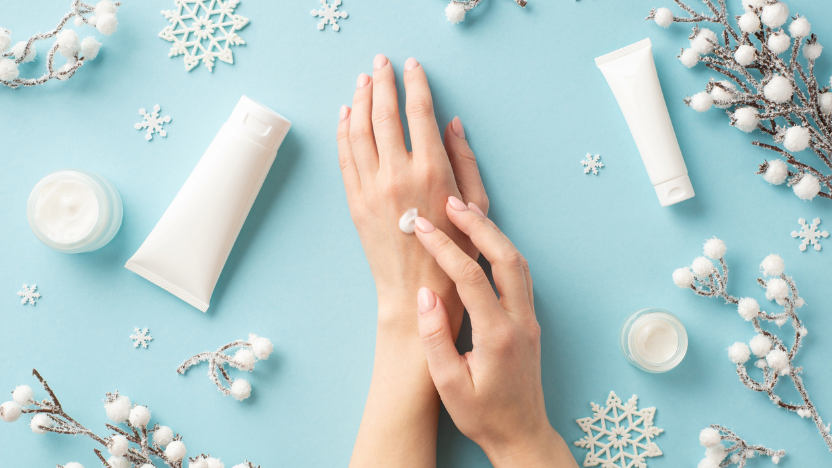How to Shave Your Legs Gently
By Admin
Published on 2025-05-12 00:00:00

Shaving your legs can be easy and gentle when you know the right tips. Whether you're just starting out or want a better way to care for your skin, this guide will help you get smooth, soft legs without irritation or razor burn.
Shaving your legs is something many of us do, but it can sometimes leave your skin feeling dry, itchy, or irritated. You might even get little red bumps or cuts if you use the wrong razor or might be in the wrong way. When you take your time and use the right steps, it can actually feel nice and leave your skin smoother. If you want a better way to shave, All Girl Shave Club is a brand to consider. This brand doesn't just deliver high-quality razors and shaving products but also guides how to do it in the right way. So here in this blog, we’ll guide you on how to avoid common problems and shave your legs without irritation.
What Makes All Girl Shave Club a Smarter Shaving Solution
All Girl Shave Club is a prominent brand not just for offering clean shaving products but also for their guidance for smart shaving solutions. Their razors are made just for women, with soft, sharp blades that help avoid cuts, bumps, or irritation. The handle is easy to hold, and the blades provide a gentle shave. What everyone loves about this brand is that they have everything you need right at home, so you don’t have to worry about missing out on any shaving solutions. They have also whipped shaved butter that makes your skin feel soft and smooth.
Tips for Shaving Your Legs Without Irritation
Here are the crucial tips for shaving your legs without razor burn.
Soften Your Skin with Warm Water
Take a warm shower or soak your legs for 5 to 10 minutes before you start shaving. This makes your hair softer and opens your pores. When your skin is soft, the razor glides more easily on it. Always start with warm water because cold water is more likely to cause razor bumps, redness, or little cuts.
Use Shaving Cream or Shave Butter
Never shave with water alone. Use shaving cream, gel, or shave butter to let the razor move smoothly. This step protects your skin from getting hurt. Choose something with gentle, skin-loving ingredients like aloe vera or shea butter. The whipped shave butter from All Girl Shave Club lets your skin feel creamy, smells nice, and keeps it soft.
Use a Sharp Razor
Don’t use old, dull razors. If your razor feels like it’s pulling or dragging, then it’s time for a new blade. A sharp razor cuts the hair cleanly and helps prevent razor burn or cuts. You should change your blade after 5 to 10 shaves. Always rinse your razor before and after shaving to keep it clean.
Moisturize After Shaving
After you shave, gently pat your legs dry with a towel and use a good moisturizer right away. Shaving can make your skin dry, so lotion or body oil helps to keep it soft and smooth. So, always look for products with clean ingredients like aloe vera, vitamin E, or chamomile to make your skin soft to touch.
Shaving your legs doesn’t mean to harm or leave your skin feeling dry and itchy. You can get smooth, soft legs without the bumps or burns by following the above simple yet effective steps. Just take your time and always be kind to your skin. You must try the easiest way: All Girl Shave Club which doesn't offer just another shaving solution but guides how to do it in a better way. So keep it gentle and keep it smooth.
All Girl Shave Club has an affiliate program, and we are affiliated with them. As an affiliate partner, we’re excited to share this information with you. When you click the following link, you may get discounts on your purchase. We may earn a small commission at no extra cost to you.
Stay tuned to ByteCrunchy to explore more about shaving solutions.
7 Ways to Beating the January Blues to Make your Beginning of the Year Brighter
By Admin
Published on 2024-12-02 00:00:00

The festive joy of Christmas brings excitement, gatherings, and cherished memories. However, once the decorations come down, many people find themselves feeling low, tired, and unmotivated. It is commonly known as the January Blues. Here you can learn why this happens and also learn practical tips to help you beat the winter gloom and stay positive.
Christmas in particular is something extra special. Throughout the whole of December, people enjoy putting up not only a tree but also a mood for the upcoming celebration. These include the fun of attending functions and office parties, gift-giving, and giving out sweets and other items. We all enjoy a series of events where we gather, giggle, get outside, and meet others. Nonetheless, after the booked celebrations are over, many people are left with weakness and certainly, not to mention the “January Blues.” It can't be wrong to say that once the excitement of the Christmas season is over, the chances are most probably getting towards January Blues. Here I want to share my thoughts about January Blue and why it happens. I'll also give some tips to beat them; just keep reading.
What Are January Blues?
The January Blues are a remedy for holiday overstimulation and include irritability, fatigue, loss of energy, and sadness. This change of mood is a result of factors such as a decrease in the number of hours of sunlight, low temperatures, and flopping of the holiday buzz. For some, they feel even worse right after holiday spending or when they are unable to meet their strict New Year’s goals. It is usual for students to go through such a phase, but simple identification of the problem along with its causes will assist in dealing with it tractably.
How January Blues Affect Mental Health
The January blues can have a very disturbing effect on mental health. Continued affection is characterized by hardness, pending of time, eagerness, weariness, and aversion to life responsibilities. In some cases, it might cause some forms of SAD, seriously linked to lack of light in the winter months. The increased stress can also deepen other mental health issues. So it is important to attend to blue feelings as soon as possible.
Ways on How to Have Fun during the January Blues
Even when it is cold outside and January really is something of a depressing month, there is always a way. Yes, there is always the possibility to make yourself feel happier. You can get the year off to the right start. Here are some practical strategies:
1-Be Routine
Practical activity as routine offers rain quantity. There is a need to be consistent with waking up at the same time during the day in order to help regulate the body clock. Take care of yourself; try to exercise, meditate, or do something that makes you happy. Adults should make sure to get quality sleep; that means getting 7-9 hours of sleep for each night’s rest.
2-Preventing Overcommitment
Avoid making unattainable resolutions that can stress you at the beginning of the New Year. Concentrate on objectives that are realistic and quantifiable and which can therefore be stakelike and rewarded. For example, instead of setting vague New Year goals like “I will get fit,” shoot at something like “I will walk for thirty minutes thrice a week.”
3-Get Light
Lack of light during wintertime contributes to a poor mood. Whenever possible, get out of the house during the day for at least a few hours. A short walk may also do the trick. Light therapy boxes should be used to help you escape the darkness and increase your energy levels. It is also possible to redesign your workplace near a window to get the most out of natural lighting.
4-Exercise
Endorphins, the body’s own natural mood enhancers, are released when you exercise. Some people prefer certain exercises, such as yoga, jogging, or a simple home workout session. All these to overcome the blues of feeling dragged back. Consequently, doing any type of activity can enhance your energy, whether walking, stretching, or bending, among others.
5-Eat Healthy
Eating good food is very important for your well-being. A well-balanced diet including essential fruits and vegetables should be taken. A healthy diet can control the rises and dips in blood sugar, which affect your mood. Do not take foods with a lot of sugar because they bring along with them what we refer to as energy crashes. Instead, turn to foods containing omega-3 fatty acids and vitamins, which are vital to a functioning brain.
6-Practice Thankfulness
Major on the things to be thankful for. On small achievements, for instance, you are likely to ponder your achievements in a task or the quality of the last meal prepared. Two of these tips involve getting into the habit of writing down what you are thankful for to gradually make the brain train more positive.
7-Stay Connected
Interacting with other people influences the quality of human life. Try to get in touch with friends and other relatives; if it’s possible, just call or make a video call. Participation in some activities, for instance, participation in community activities and forming clubs, could also go a long way toward reducing loneliness.
Why It Is Necessary to Treat a Case of January Depression
That is why you must not disregard January Blues, as its consequences may have an impact on your continued mental well-being. These feelings, if not addressed, may cause chronic stress, anxiety, or depression. If you are more proactive in managing your mood and energy, it will be possible to survive this stage while also investing in your mental health.
Creating a Practice of Development for January
January doesn’t have to be so bad. Do not consider this a time of reckoning and accusing; rather, consider it a time of self-actualization. Engage in activities that have never really appealed to you before, set realistic goals, and maintain a healthy way of life. It doesn’t take much to turn January from a month of dreariness into a month of optimism and planning. Remember, it is okay to feel low after the holiday high. Do not think that others do not feel like that too. Always remember that if days are still difficult now, then little actions toward your well-being will eventually bring light to your path.
Stay tuned to Byte Crunchy to explore more tips and tricks to beat the January blues.



